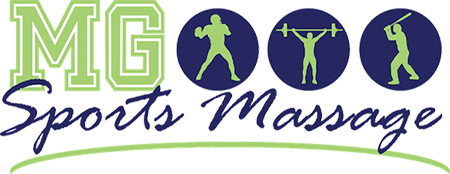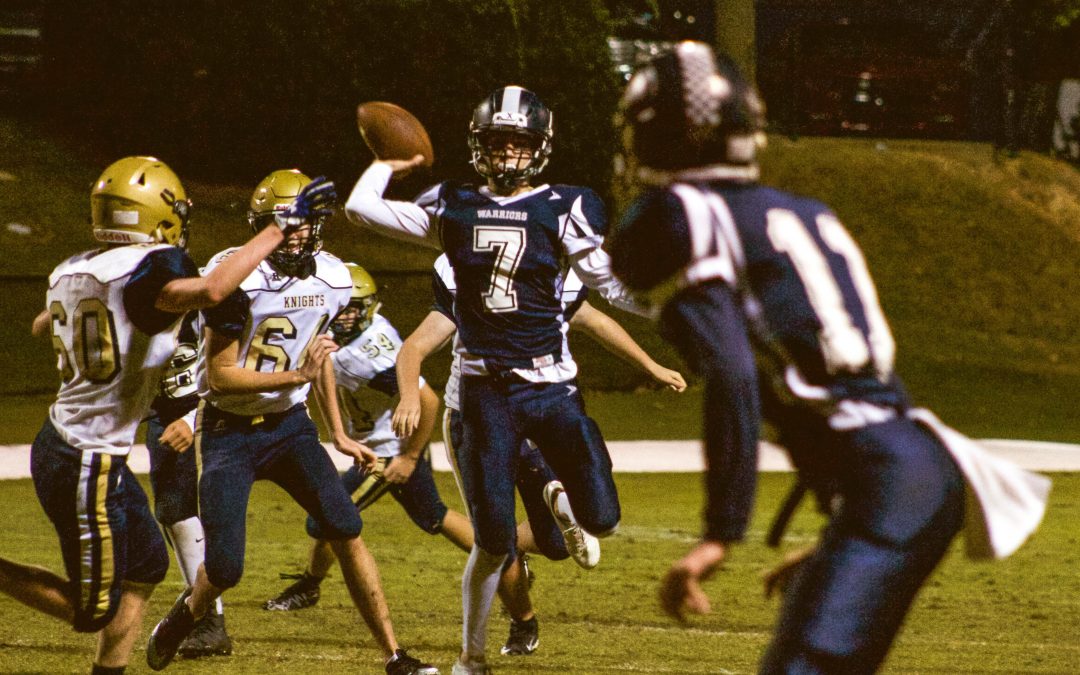This Sunday, the majority of America will gather around our televisions to watch two teams take the field and…experience injuries. It’s unavoidable in the athletic professions, especially in contact sports like football.
In our practice, we treat muscular injuries almost as much as we work to prevent them. Accidents happen. And they’re even more likely to occur when someone does not follow proper preventative steps.
Contact sports tend to have a high number of muscular injuries, and some are quite commonly sustained. Depending on the type and severity of the muscular trauma, different methods of healing are required, and massage plays a part in recovery.
Common Muscular Injuries in Football and Rugby
Ankle sprains
A quick change in direction can cause joint and muscle damage to the ankle.
Knee injuries
ACL, MCL, and meniscus injuries run rampant in football players. Any impact to the knees – whether it be from the side, front, or back – or body rotation with feet planted can cause damage. Unfortunately, surgery is typically related to these injuries which can lead to a lengthy healing process.
Leg injuries
Hamstring pulling or tearing and contusions can happen when a player doesn’t warm up enough and performs a quick, accelerating move. Tackling can also cause contusions to leg muscles.
Rotator cuff tendonitis
Repetitive motion over an extended period at a rotating socket can cause inflammation or irritation of the tendons. This type of muscular injury typically affects athletes like quarterbacks.
Strains and sprains
In football players, muscle strains and ligament sprains typically happen in the lower appendages. However, with throwing and hits impacting the body, strains in the wrists, shoulders, and elbows are not uncommon.
Common Muscular Injuries in Hockey
Calf injuries and shin splints
Bursting into a sprint from a stopped position on the ice can result in overstretching the muscle when it hasn’t been conditioned for that use. This movement along with skating faster than you’ve trained can result in muscle tears in the calves.
While lack of proper training can result in shin splints for many athletes, hockey players are particularly prone to this type of muscular injury thanks to the angle of their feet in relation to the shinbone when skating.
Groin and hip injuries
Quick, sprinting movements without proper warm-up exercises can pull or stretch hip and groin muscles. The recovery recommendation is typically time off the ice and cold therapy.
Similar to in football, pulling a hamstring is not difficult. If you don’t warm up or train enough, the weakened state of the muscle can overstretch or tear during heightened activity.
Knee injuries
Just like in football, hockey players are susceptible to strikes to the knee – either from another player’s stick or a direct, body impact. These blows to the knee can cause ACL and MCL pulls as well as meniscus tears.
Shoulder injuries
As a high contact sport, hockey experiences its fair share of collisions. Pileups or a hard impact with a board, the ice, or another player can cause shoulder separations. Strength training helps to decrease your chances of shoulder injuries, but it won’t prevent them altogether.
Common Muscle Injuries in Martial Arts, Boxing, and Wrestling
Bursitis
Most common with boxers, bursitis occurs when the shoulder is overextended or is not allowed to rest.
Rotator cuff injuries
This injury often occurs across the board for these contact sports. The repetitive striking motion of athletes will inflame the muscles in the shoulder if not trained or appropriately stretched.
Tearing can occur either over time or from a single, rapid movement when the athlete does not warm up enough. More repetitive motions result in microtears which are referred to as tendonitis.
Sprains and strains
Because any type of martial arts involves striking an opponent, both the striker and the person receiving the impact can incur an injury. Strains can be acquired merely from sparring with a partner and not following the kick with the weight of your body.
Just like in the above contact sports, pulled or strained hamstrings are typical as well.
Ankle sprains run rampant in every sport, but in these cases, the injury occurs most often during sparring.
For wrestlers, in particular, the most common strains and sprains involve muscles or tendons in the knee, shoulder, and ankle. Back and leg strains are also typical as a result of gripping, pulling, and attempting to change the opponent’s momentum.
Tendonitis
Because kicking is so often involved in martial arts, an overextension of the knee can develop into tendonitis.
Torn labrum
This muscle holds the arm in the shoulder socket so that any tearing can cause instability and even dislocation. Tearing in the labrum will often come from repetitive punches in boxers.
Benefits of Massage Therapy for Contact Sports
Many of these injuries require surgery to repair the damage, but some can heal with RICE treatment: rest, ice, compression, and elevation. Adding massage to a healing regimen, especially after surgery, can decrease healing time and reduce pain.
Swelling is a regular occurrence after surgery. Massage works to relax muscles and increase circulation which can help reduce the chance of fluid buildup.
Scar tissue also tends to build up in the body, causing pain and immobility. Receiving massage therapy during the healing process helps to prevent tissue buildup, so the injury heals properly.
Stress can also be a factor after surgery or a muscular injury, especially when you just want to get back into the game or match. One of the core components of massage is to help calm tense and overused muscles, making it an ideal form of therapy after an injury.
We work one-on-one with athletes who have sustained injuries on and off the field and are recovering from surgery. If you’d like to know more about how massage can help with your injury recovery, contact us.

